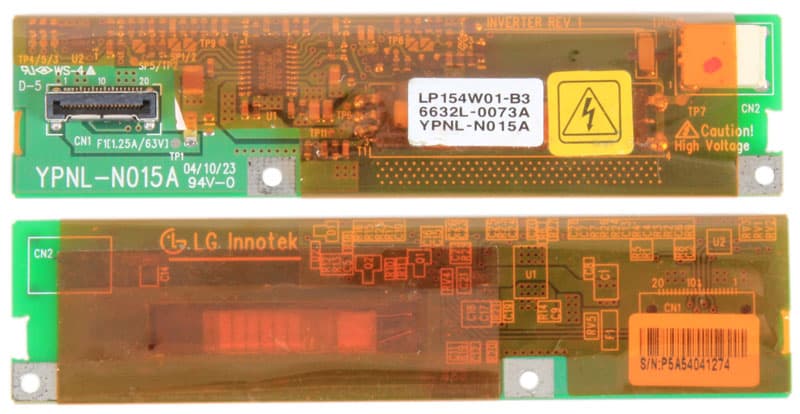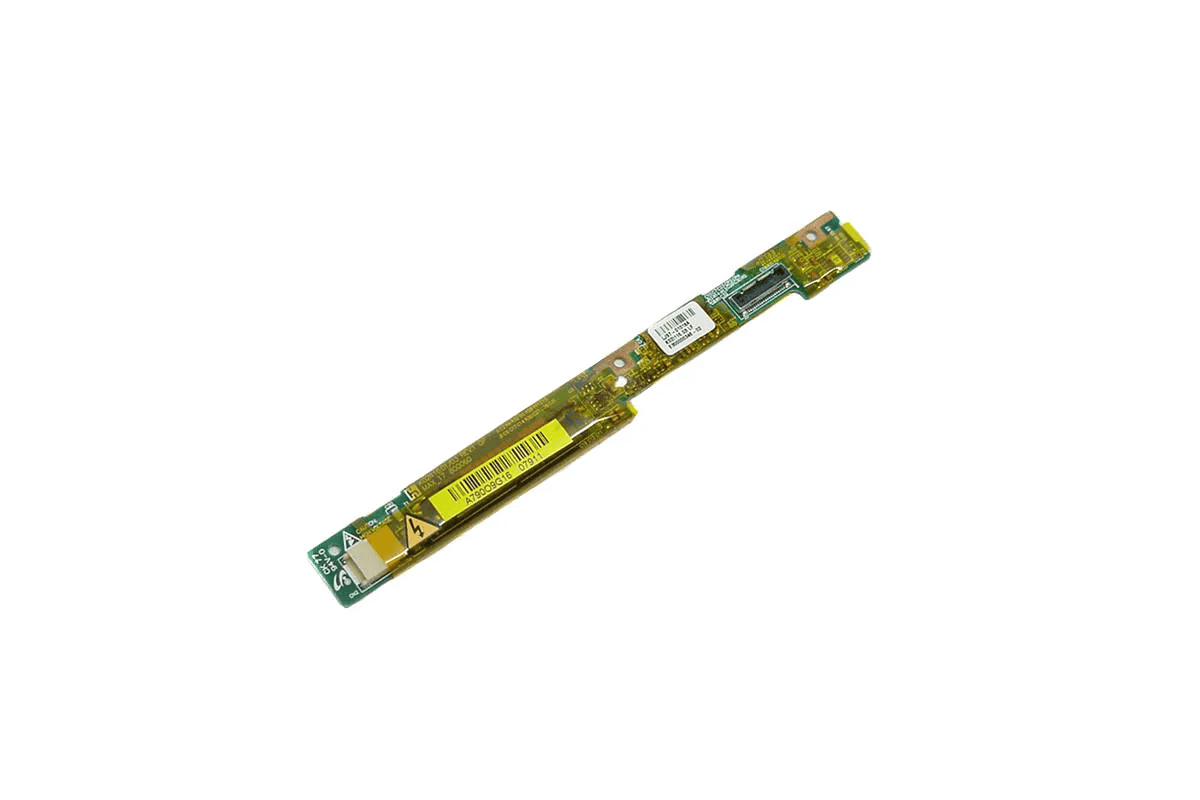An LCD inverter is a pivotal component inside many laptops and monitors, instrumental in creating the visible image on the screen. This small but powerful device serves as the bridge between the laptop’s direct current (DC) power and the alternating current (AC) that the screen’s backlight needs. Without the inverter, the backlight wouldn’t turn on, and the screen would remain dark, rendering the display ineffective. It’s essentially a power converter that adapts the incoming electricity to suit the needs of the backlight.
In laptops, the inverter is typically placed near the screen, sometimes as part of it. Its function resonates in its very purpose: to ensure that the backlight of the LCD is illuminated, providing the necessary light to project images. As technology grows, the type of backlight and accordingly the inverter may change, but the fundamental role remains consistent.
Key Takeaways
- LCD inverters convert DC power from the computer to AC power for the backlight.
- The inverter is crucial for the visibility of the screen’s display.
- Issues with the inverter can cause the display to remain dim or completely dark.
Understanding LCD Inverters
LCD inverters play a critical role in screen display technology, transforming power types and illuminating screens.
Inverter Function and Importance
Inverters are essential for an LCD screen as they convert DC (Direct Current) from the power supply to AC (Alternating Current), enabling the backlight to function. Without an inverter, the screen would remain dim and unusable because the backlight is what makes the display visible.
Components of an LCD Inverter
An inverter board typically includes a circuit with several key components such as transistors, resistors, capacitors, and sometimes a fuse. These components work together to manage the flow of electricity and generate the necessary voltage to power the screen’s backlight.

Types of LCD Inverters
There are mainly two types of inverters found in LCD displays:
- CCFL Inverters, which power cold-cathode fluorescent lamp backlights, commonly found in older screens.
- LED Inverters, which are used for modern screens with LED backlights, though these are often less complex thanks to the nature of LED lighting.
Troubleshooting and Repair
When an LCD inverter is failing, the screen’s backlight may flicker, lose brightness, or stop working entirely. With the right approach, you can often identify and even fix these issues yourself. Here’s how to address problems with your monitor or laptop’s LCD inverter efficiently.
Identifying Inverter Failure
A failing LCD inverter often presents clear signs before complete failure. Flickering or dim screen conditions are common indicators. Specifically, a dim screen can imply that the inverter is no longer able to convert DC power to the necessary AC power to maintain backlight consistency. To ascertain this, turn on your monitor or laptop in a darkened room. If the screen briefly lights up and then goes dark again or has an inconsistent glow, it may be the inverter’s wiring or the circuit board that’s in trouble.
Repairing an Inverter
Repairing an LCD inverter involves a few careful steps. After ensuring the power source to your device is off, you’ll need a screwdriver to open up the panel, usually located at the bottom edge or the corner of the screen. Typical tools for this job include cross-head or flat-head screwdrivers, depending on the types of screws used. Once inside, you can check for loose wires or broken components on the inverter board. Soldering may be required to reattach wires or to replace components that are visibly damaged.

Replacing an LCD Inverter
Should troubleshooting and repair attempts not yield results, replacing the inverter could be the necessary course of action. Most laptops or monitors have model-specific inverters, so ensure you have the correct replacement part for your model, which might be specific to brands like Dell. With the replacement inverter ready, remove the old one by disconnecting its wires and unscrewing it from the motherboard or frame. Install the new inverter by reversing these steps, reattach all connectors securely, then test the device to confirm the backlight is consistently working.
Frequently Asked Questions
In exploring the pivotal role of an LCD inverter, it’s essential to shed light on some of the common queries people have about this component. From its basic operation to troubleshooting tips, let’s dig into the specifics.
How does an LCD inverter function in a laptop?
An LCD inverter in a laptop is responsible for converting the DC power from the battery to AC power, which is necessary to illuminate the screen’s backlight. This conversion is vital for the visibility of the display under various lighting conditions.

What are common symptoms of LCD inverter failure?
When an LCD inverter starts failing, one might notice the laptop screen becoming dim, flickering, or occasionally going black. These symptoms indicate that the inverter is unable to maintain a stable power supply to the backlight.
Which displays require the use of an inverter?
Displays that use cold-cathode fluorescent lamps (CCFLs) as a backlight source require an inverter. Modern LCD screens often use LED backlights that usually don’t need an inverter.
What role does an inverter play in a monitor’s operation?
The inverter’s role in a monitor is akin to that in a laptop; it supplies the AC power needed for the backlight. This continuous power stream is what makes images on the monitor visible to users.

How can one diagnose issues with a laptop’s LCD inverter?
Troubleshooting an inverter involves checking the display for any signs of life, like faint images or brightness changes. If the screen is entirely dark but the laptop seems to be working, it might be an inverter issue.
What are the distinguishing characteristics of a laptop LCD inverter circuit?
A laptop’s LCD inverter circuit is distinct because it’s typically a small, elongated board located near the display panel. It is designed to be efficient, converting power with minimal energy loss, crucial for battery-powered devices.







